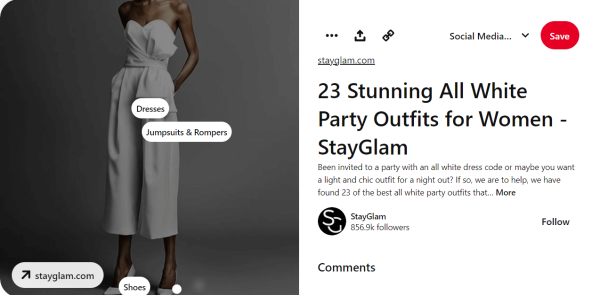
There’s a customer for every niche, and they will find you when you send out the right signals.
Whether you’re a music fan with a knack for finding deep cuts on viny — connecting fellow collectors with the rarest of records — or a foodie hooking up the next generation of celebrity chefs with the tools they need to get creative in the kitchen, passion alone won’t help you find your customers. However, proven ecommerce marketing strategies will.
Get familiar with tools like ecommerce email marketing, social media marketing, SMS text message marketing, and other strategies to find what works best for you and your business. And move your ecommerce shop from internet obscurity to a highly trafficked shopping destination.
What is ecommerce marketing?
Ecommerce marketing involves using promotional techniques that drive traffic to your website and increase sales. And its benefits are apparent: it builds your brand, connects you with new customers, and reconnects you with people who already shop on your site.
Whether it’s content marketing, social media, or user-generated content, chances are you already have plenty of ecommerce marketing tools at your disposal. While each tool is effective, successful ecommerce marketing strategies include a blend of channels and messages to reach your audience where they are, when they want to hear from you.
Ecommerce marketing strategies
Before diving headfirst into marketing, you need to establish your goals. What are you trying to achieve with your marketing campaign? Consider these common goals before developing your strategy:
- Engaging a wider audience
- Retaining more existing customers
- Reducing customer turnover on your website
- Reducing the number of customers who abandon their carts
Knowing what you want to accomplish will help you pick ecommerce marketing strategies that target the right customer with the right message. Once you get comfortable with the different strategies and tools at your disposal, you will use them all. But start with a specific goal to keep the process manageable.
Web content marketing (blogs)
Ecommerce content marketing is crucial for any retail business because it drives you to the top of the search engines and lets you build a relationship with your customers. A well-written blog can set you up as an industry leader. It can also answer common customer questions, helping you guide them through a sale.
For the best results, publish often and include keywords and phrases in your content. Consider what internet searches would land people on your page and use them to create topic ideas for your blog. Reach a wider audience by guest posting with other businesses.
Engage customers with content that resonates with them. You want to offer a valuable experience and establish yourself as an authority. Look through analytics to determine what your audience wants to read and give it to them.
Content marketing isn’t limited to written blogs. If you’re good in front of a camera, consider hosting a video series. Add keywords and phrases to the video descriptions and include a link to your ecommerce site to improve your search engine performance. Round out your content strategy with an active social media presence to guide people toward your site.
Social media marketing strategies
Your customers are probably on social media, which is why your ecommerce marketing strategies should include a focus on one or more platforms. More than 70% of Americans of all ages and demographics use at least one social media platform daily. Social media is perfect for letting people know about your ecommerce site and encouraging them to shop there. Set up a business account on one or more of these popular platforms:
- Snapchat
- TikTok
Facebook is still the most widely used platform, with 2.9 billion active monthly users. Facebook is followed closely by Instagram, with 1.5 billion active monthly users. You can use a digital marketing platform to manage multiple profiles, but if you’re not interested in maintaining a presence on every available platform, concentrate on these two.
When you’ve set up your business account, you can start finding people on the platform by getting creative.
Run a contest
Run a social media contest with a branded hashtag to help social media users stumble on your ecommerce shop. As part of the entry rules, have every person tag at least one other user. This will help you expand your network and introduce yourself to people who’ve never heard of you.
Improve your chances of success by offering an enticing prize. It could be a high-end item from your shop, a gift card, or another type of giveaway.

Make posts shoppable
Bring people to your website with shoppable posts. These are posts of your products with clickable links that direct people to specific items. For example, if you’re running a clothing store, create a shoppable post featuring a carousel of different outfits from your fall catalog. Tag each item with a link to these items. If someone wants the handbag in the post, they can click it and add it to their cart.
You can also create shoppable posts on Pinterest. If you’re using this social media platform, sign up as a verified merchant so that you can pin your products. Next, tag your shoppable pins and link them to your shop. Pinterest also has an option where people can shop for similar items directly on the platform by clicking “shop for similar items.”

Use paid ads
Facebook, Pinterest, and Instagram also offer paid ads, which are another great way to capture people where they are. Sponsored posts allow you to appeal to a captive audience because you can target by interest, demographics, location, and other characteristics of your ideal customer. Follow these guidelines for your paid ads:
- Use visually appealing images or videos to stand out
- Include a call to action in your captions
- Boost participation with a special offer
- Link your post to a landing page to track its success rate
- Run a/b tests of various ads with small audiences to see what works and what doesn’t
Retarget your audience
Retargeting ads are a specific type of sponsored post that only run to people who’ve already visited your website. If you’re using Facebook or Instagram, you can install a pixel on your website that tracks how customers interact with it. If someone is browsing a particular item and navigates away from the page without buying, a retargeting ad would show up in their feed, reminding them to finish the purchase.
Influencers help you market
Supplement your paid ads by letting social media users speak for you.
Influencer marketing is a popular form of word-of-mouth advertising in which you partner with an internet personality to promote your brand.
This is one of the more successful ecommerce marketing strategies because 37% of shoppers trust influencers more than brands. Finding the right partner can boost your online reputation and inspire more people to shop on your site.
Influencer marketing can get pricey if you partner with someone with a substantial following. If you’re working with a limited budget, consider working with people who are less established, with between 10,000 – 100,000 followers. You can still get eyes on your page without the hefty price tag.
User-generated content
Another successful way to build word-of-mouth with social media is to encourage user-generated content, which refers to organic posts from your users in which they tag and mention you. One of the most popular marketing strategies for ecommerce retailers to create user-generated content is to run a contest.
But you can inspire your customers to post about your brand by engaging them on social media. If you have a popular product line, ask your followers how they use it. Have them tag you in photos with your merch. Search for your brand to see what customers are already posting. Then you’ll know which products to boost on your social feeds and email marketing.
Email marketing strategies
About 4.3 billion people use email every day. And, email marketing remains one of the most cost-effective and successful ways to engage existing and potential customers. It’s great for building your brand and maintaining relationships with people who’ve already bought from you.
You should regularly engage your customers with a mix of automated and organic email messages.
Welcome email
Start by creating an automated welcome series to send to anyone who signs up for your list. Follow these guidelines for the first email in the series:
- Send the first welcome email as soon as someone signs up for your list
- Hook the reader with an engaging subject line
- Make it personal
- Add a clear call to action
If you promised a special offer in exchange for an email address, include the promo code in your welcome email.

Newsletters
Ecommerce newsletters are one of the best marketing strategies for ecommerce because you get to add value to your readers. They probably have other newsletter subscriptions, so make yours stand out from the pack.
Like welcome emails, the trick to standing out with email marketing is through your subject line. You can appeal to your audience with language that creates urgency, or you can appeal to their senses with vivid language that paints a picture. Keep it short and simple but have fun.

When you’ve started building your email list, break it into segments and send personalized content to people in different groups. Mix up your topics to keep people interested. If you did a seasonal product guide for your last newsletter, switch topics this time and offer some industry insights that appeal to your customers.
Promotional emails and coupons
Email is a great way to promote sales and other special offers. This marketing for ecommerce tool makes your mailing list valuable because email recipients can get early access to sales and other special offers. If setting up a list-only promotion, use a specific promo code to track how many people on your list took advantage.
Use your email list to send coupons to people who’ve opted in. You can surprise them with special seasonal offers or send coupons on special occasions like a birthday or an anniversary. Show your customers you care about them with personalized offers to keep them coming back.
Email is an excellent retargeting tool for reintroducing yourself to customers who haven’t shopped with you in a while. Automate retargeting messages to people on your mailing list who have been inactive for a set period.
These emails usually feature a subject line telling customers you miss them or encouraging them to return. Send out a special offer to bring them back and include images of popular merchandise.
Let your customers opt into SMS messages to take things up a notch and double your reach.
SMS marketing strategies
While SMS marketing isn’t as widely used as email marketing, it’s just as valuable. SMS refers to marketing messages you send via text message. Most of your clients — 75% to be precise — are open to getting texts from you. Not only that, but this marketing channel has a high open rate.
Use SMS marketing to send coupons and other special offers to your customers. In 2022, 80% of Americans redeemed coupons with their smartphones. You’re missing a captive audience if you’re not offering your customers the chance to sign up for text messages.
Keep your audience engaged by sending them SMS messages to:
- Remind them of upcoming sales
- Gather feedback with customer surveys
- Confirm orders
- Send special offers to your best customers
Use a digital marketing platform to automate text messages, so you don’t have to create them from scratch whenever someone joins your list. Automate your welcome message using similar tactics to your welcome email. You should also automate special promo codes for birthdays and anniversaries.
People can’t sign up for your email and SMS lists if they can’t find you online.
Search engine marketing (SEM)
Generally, when your brand appears on the first page of search results, people are more likely to click on it. Over 70% of users won’t navigate beyond it. SEM lets you catch these users by paying to have your website appear at the top of internet searches.
To target your audience, set up pay-per-click ads on Google and Bing. You might be tempted to ignore the latter, but this search engine lets you appeal to a network of 6 billion active monthly users. Improve your chances of driving internet traffic with paid ads by:
- Creating a specific landing page for your ad
- Using keywords strategically to appeal to your target audience
- Using action words in your headlines
- Highlight your product benefits in your headers and taglines
- Target people by demographics or location
Keep your paid ads consistent with your brand voice and tone. Your headlines and subheaders should match the branding on your website. The same rule applies to your landing page. It should match the rest of your ecommerce site with similar fonts, colors, images, and language.
Paying for search engine placement doesn’t mean you should neglect SEO.
Search engine optimization (SEO)
Ecommerce SEO is one of the best ecommerce marketing strategies. As was mentioned in SEM, most users won’t navigate past the first page of search results, so you want your website to rank near the top. SEO is different from SEM because SEO focuses on organic search results.
Keywords are one of the best tools at your disposal to improve your SEO and boost your position with search engines. Do some research upfront to find out how people are finding your website. Use Google Analytics or a similar tool to see how people find you online and capitalize on those keywords.
Don’t overuse keywords. Instead, place them strategically throughout your website where it makes sense. Product descriptions, for instance, are prime locations for keywords. Think about what someone would search for when looking for each product, and include that phrase in the description.
Frequently publishing content on your blog and social media will also help boost your search engine rank. Poll your audience or use keywords from your analytics to come up with popular topic ideas. Search your competition to see how the top websites are attracting customers.
You can also have other content creators drive traffic to your site.
Affiliate marketing strategies
Affiliate marketing is a marketing strategy where you pay people to promote your products. They post blogs or other content featuring your products with shoppable links and earn a commission on every sale.
For best results, be selective with your affiliates. Work with partners who align with your brand and who operate legitimate websites. Partnering with a bot or a website with a bad reputation could tarnish your brand.
When starting, look for bloggers and influencers in your field. Instead of blindly approaching everyone in your field, develop some goals and objectives for your affiliate marketing program. Decide how much traffic you want and how much you’re willing to pay your affiliates. Then, assess your customers to get an idea of which internet personalities they’re likely watching.
Set your terms and conditions up front and have a lawyer look them over before you have anyone sign up. You want your program to be fun and accessible, but you also want to avoid spending your whole marketing budget on affiliate commissions. Then approach your affiliates and start attracting new customers.
Once customers are on your site, offer them a great experience.
UX marketing strategies
Your website is your primary ecommerce marketing tool. If your customers can’t find their way around, they probably won’t stay on the site for long. Say you walked into a store where the shelves are disorganized, and everything is in piles. You would probably turn around and walk out instead of staying in an attempt to sift through and find what you want.
Your website should be the same way. Enhance your users’ experiences by making the site clean and easy to navigate. Create categories that make sense so people can easily find what they want. Narrow down your final transactions to a couple of clicks without many unnecessary fields. If you can, use autofill so that your customers don’t have to type their information with each purchase.
Make your return policy and customer service phone number stand out. Your customers shouldn’t have to jump through hoops if they get something and decide to send it back. Keep customers coming back with these strategies:
- Keep your text short and sweet with small paragraphs
- Add calls to action throughout the website to guide the user journey
- Make it easy for customers to compare items
- Use colors and fonts that are easy to read
- Keep your branding consistent
A great experience will inspire customer loyalty, so reward your best shoppers.
Customer loyalty programs
This ecommerce marketing strategy helps you retain your best customers by rewarding them for shopping with you. Customer loyalty programs also allow you to communicate and engage with your shoppers.
To encourage sign-ups to your program, make it valuable. Offer gifts, special promotions, early access to sales, points, and other perks to reward your best customers.
Consider a tiered program where people are rewarded based on their spending. This allows you to offer your best customers more exclusive perks than casual shoppers. A loyalty program is designed to show customers how much you appreciate them, so it makes sense to give something extra to those who shop with you the most.
When you’ve settled on a loyalty program, promote it in various ways until you figure out what works best with your customers. Some people respond to offers before they purchase. Others are more likely to sign up for a loyalty program during or after the purchase. Try it each way and see which tactic inspires the most sign-ups.
Each of these strategies will be more effective with some simple guidelines.
Follow ecommerce marketing best practices
Ecommerce marketing best practices will help you put your best foot forward. Start with making sure your website is responsive on mobile devices.
You know your website is your best marketing tool, but even the best ecommerce website may repel users if they can’t open it on a smartphone or a tablet. Over 90% of people surf the internet on a mobile device, so test your website and landing pages on a smartphone before going live.
If you’re using frontloading ads prompting people to sign up for your website before they enter the home page, make sure mobile users can close them. Test your checkout process to be sure it works properly on mobile devices.
Use the top check-out page strategies to ensure the checkout process is easy for any user regardless of which device they use to shop with you. Don’t force users to create an account just to check out. Offer a guest opportunity.
If you can, set up your website with multiple payment options so people can use the one they like the best. Along with credit cards, integrate your site with PayPal, Apple Pay, Google Pay, Amazon Pay, and other tools that let users purchase without rummaging through their wallets.
Protect your customers’ identities. Make your checkout process secure, and don’t sell their personal information. Reassure customers that their data is safe.
Once you’ve got a killer website with speedy checkout and personalized content, follow these guidelines to get people there:
- Personalize your messages
- Use retargeting to engage people who’ve already shopped with you
- Save time with automation
Automation saves you time by letting you set up some of your marketing tools ahead of time. Some of the easiest automated processes are email and SMS messages, particularly your welcome email and special promotional messages. Lastly, use templates to set up attractive and practical automated messages that appeal to your audience while saving you time.
Now that you’re aware of ecommerce marketing strategies to promote your shop, it’s time to get started and bring more customers to your website.
Put it all together
You can use many tools and tricks to build your brand and drive traffic to your site, but you don’t have to do them all at once. Start with your website. Your ecommerce website is often a customer’s first impression, so take your time and get it right.
Create a site that is easy to navigate and offers a great user experience. Then you can work on other marketing strategies to connect with your audience.
Ecommerce is a 4.9 trillion dollar industry. No matter what you’re selling, you can find the right audience for it by building a better path to your website. Use these marketing tools to share your passion with new customers and engage those who’ve supported you from the beginning.
With personalization and creativity, you can improve your internet presence, making it easy for people to find your shop. There is no better time to get started than now.




